 
SITA 6000
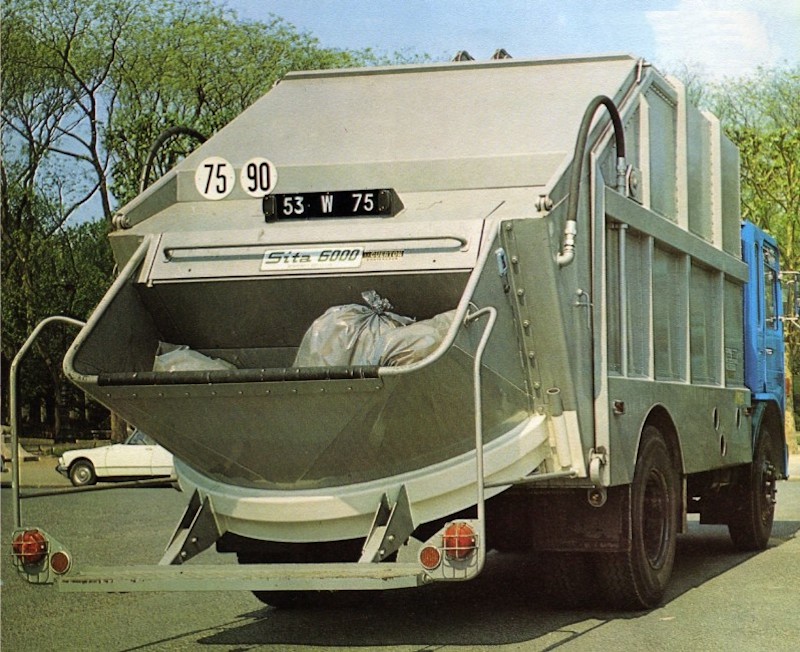
Société Industrielle de Transports Automobiles (SITA) was a public service contractor that had, since 1919 provided refuse removal for the greater part of Paris, France. Their Chief Engineer, Fernand Rey, had invented the worlds first hydraulic rear loader in 1933. SITA had hundreds of Reyloaders in their collection fleet during the 1930s and 1940s, eventually replacing them with more modern types such as the SEMAT loader in the years following the Second World War.
By the 1960s, SITA was expanding it's operations outside of the City of Paris. The company decided to design and build a new refuse packer to meet its own needs, and to market commercially for sale. The result was the SITA 6000, which surely ranks among the most novel post-war designs, and has had a far-reaching impact beyond this simple rear loader. When Charles H.A. Laverne filed his patent application in 1962, the type of equipment used in Europe was markedly different than that of North America. A great variety of refuse packer styles were in use, including the KUKA rotaries and various 'inverted drawer' type rear loaders from makes such as Ochsner, Dennis, and SEMAT. Many were 'continuous loading' packers, which helped to make collections more efficient. Against this backdrop, the SITA 6000 arrived with a totally new approach among refuse packers.
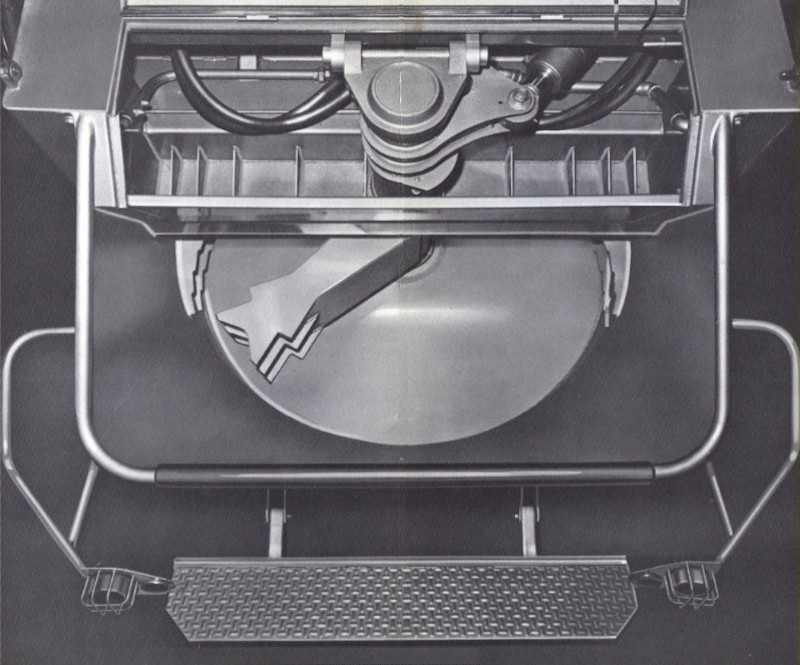
Laverne's design was actually a variation on a 1958 Fernand Rey patent, and it is not known if Rey ever actually built his version for SEMAT. The heart of the design was a short, relatively shallow vane welded to a steel tube supported by ball bearings, mounted within a washtub-shaped hopper. Twin hydraulic rams pivoted the tube back and forth, driving the vane through a 180-degree arc, alternately moving refuse upward into the body through left and right passageways. This was a true continuous loader in that the vane, or "paddle" as it is sometimes called, is always packing trash whenever it is in motion. There is literally no wasted movement with this design, which was an excellent choice for residential household pickup. Special spikes were formed on the tip of the vane to rip open paper and plastic bags, and reduce air pockets within the body.
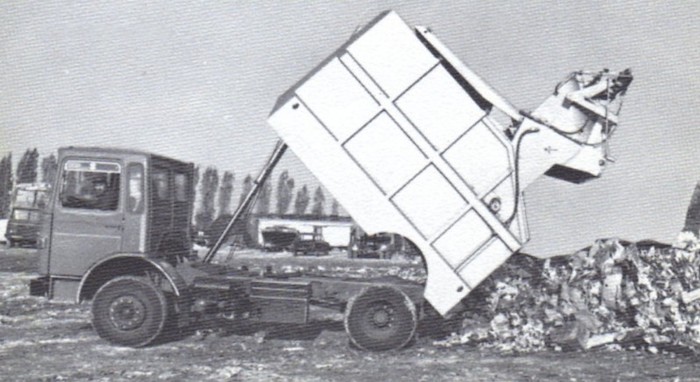
On earlier models, the tailgate appears to have been raised by the old anchor-cable method. This involved a length of cable which was affixed at one end to the vehicle frame (usually behind the cab) , routed over the top of the body (through pulleys) and connected on the opposite end to the tailgate. Thus, as the body was tilted during tipping, the cable was tensioned by the rising body, opening the tailgate automatically.
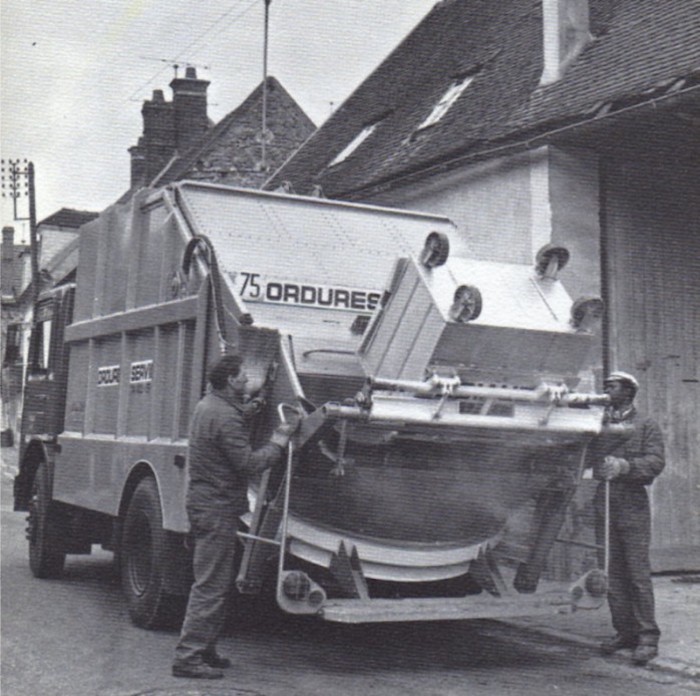
The generous hopper basin could easily handle small bins, and many were fitted with optional lifting equipment as shown in the photo above. All hydraulic components were protected against the incoming refuse. The packing paddle and shaft were the only parts exposed.
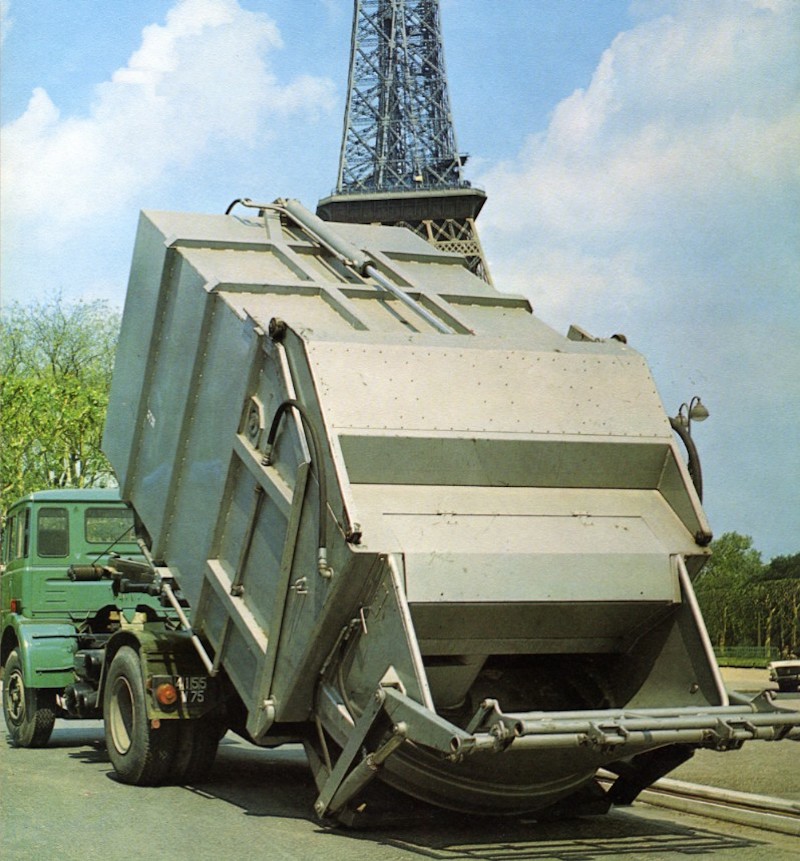

By 1970, a roll-off version was released with a self-contained electric motor to operate as a stationary packer. These could be left on-site, and were powered by land lines provided. When filled, the box was loaded on the roll-off frame and carried to the disposal point, and unloaded by gravity. Full-eject bodies were also optional by 1970, which naturally increased compaction densities as well. The ejection body featured extra reinforcement ribs and an open front section. The rear-loading body has been produced under license in the USA (E-Z Pack SRL), Germany (FAUN-SITA 6000) and The United Kingdom (Bradley 6000). Numerous others have copied the design with minor changes for rear-loading and ASL applications.
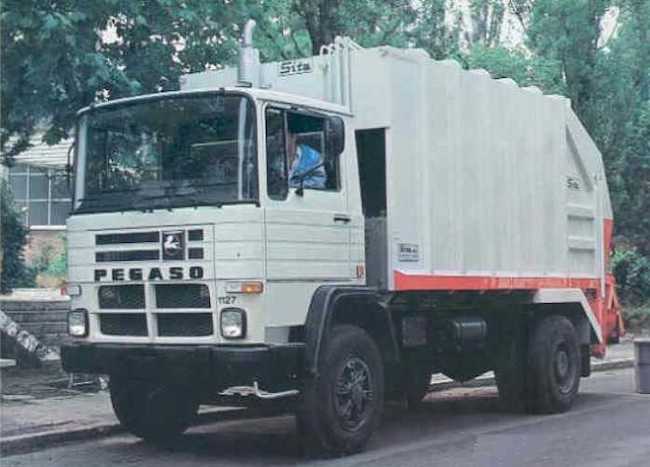
SITA 6000 with ejection-type body
SELECTED PATENTS
|
Patent # |
Description |
Inventor |
Assignee |
Date |
|
FR1196122A |
Appareil pour le chargement de... |
Rey |
|
May 13, 1958 |
|
US3220577A |
Material-handling apparatus, especially a refuse collector |
Laverne |
SITA |
December 5, 1962 |



7/4/11 (updated 11/29/22)
© 2011
All Rights Reserved
Photos from factory brochures/advertisements except as noted
Logos shown are the trademarks of respective manufacturers
|
|
| 





